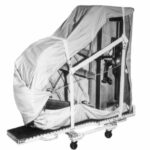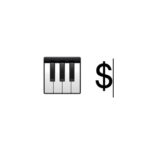Piano tuning is an intricate process that requires not just an experienced ear, but a capable hand as well. From adjusting hundreds of small screws and hammers to isolating sounds and pinpointing the source of a sour note, there’s no shortage of things to twist, turn, and move. However, what we don’t often think about are the tools that allow us to perform these tasks in the first place. After all, many of these components are far too small to adjust with your bare hands. These are some of the different types of piano tuning tools and what function each of them brings to the piano tuning process.
Tuning Lever
The piano tuning lever, otherwise known as a tuning hammer, is integral to the success of the tuning process. This is the tool that makes it possible for a professional to turn a piano’s tuning pins and either tighten or loosen the strings wrapped around them. It often consists of a long steel shaft and a sturdy handle that provides the right amount of torque. Tuning levers are also manufactured in a T-shape to assist in removing faulty pins when needed.
Mutes
Mutes are also incredibly important to piano tuning, as they allow the technician to freeze specific strings so they don’t produce any sound. This helps by allowing them to isolate certain tones and clarify how much that string needs to be adjusted. Mutes come in various shapes and sizes to accommodate several adjacent strings. Having a few different models on hand will ensure success.
Lever Tip Wrench
Another type of piano tuning tool to be aware of is the lever tip wrench. Since pianos use several different types of screws and pins, professionals need to switch out the heads of their tuning levers. Lever tip wrenches allow them to do just that. By inserting the wrench into the head and cranking it either clockwise or counterclockwise, they can loosen or tighten the tip.
Tuning Fork or Electric Tuner
Piano tuning professionals also often use either a manual tuning fork or an electrical tuner to test whether the pitch of the strings is correct. These devices are set to specific keys and designed to produce sounds mimicking the one the technician is trying to recreate. This lets them know whether the string is properly tuned or whether it needs further adjustment.
For more information about the piano tuning process, reach out to Chicago Piano Tuners. As experienced piano tuning technicians, we understand the inner workings of acoustic pianos and what’s required to keep them performing properly. We’re always equipped with the tools listed above and more in order to service the instrument you love.






